Although in my heart (and as he admits himself, his as well) he will always be Jonathan Levinson from Joss Whedon’s long-running series “Buffy the Vampire Slayer”, Danny Strong has far surpassed even Jonathan’s wildest dreams. Continually appearing in front of the camera for the past 25+ years in one-offs on film and tv with recurring roles in television series like “Buffy”, “Gilmore Girls”, “Mad Men”, “Justified” and most recently, “Empire”, where Strong has really made his mark is as a screenwriter and producer. Already a double Emmy-winner for his work on “Game Change”, Strong also boasts screenwriting credits for “Lee Daniels’ The Butler”, “The Hunger Games: Mockingjay” Parts 1 and 2, and “Empire.” Thanks to “Empire”, Strong finally took the plunge into directing, helming a few episodes and getting his feet wet. But television wasn’t the end of the directorial road for Danny Strong. He was determined to make the leap into feature film directing. And leap he does with REBEL IN THE RYE.
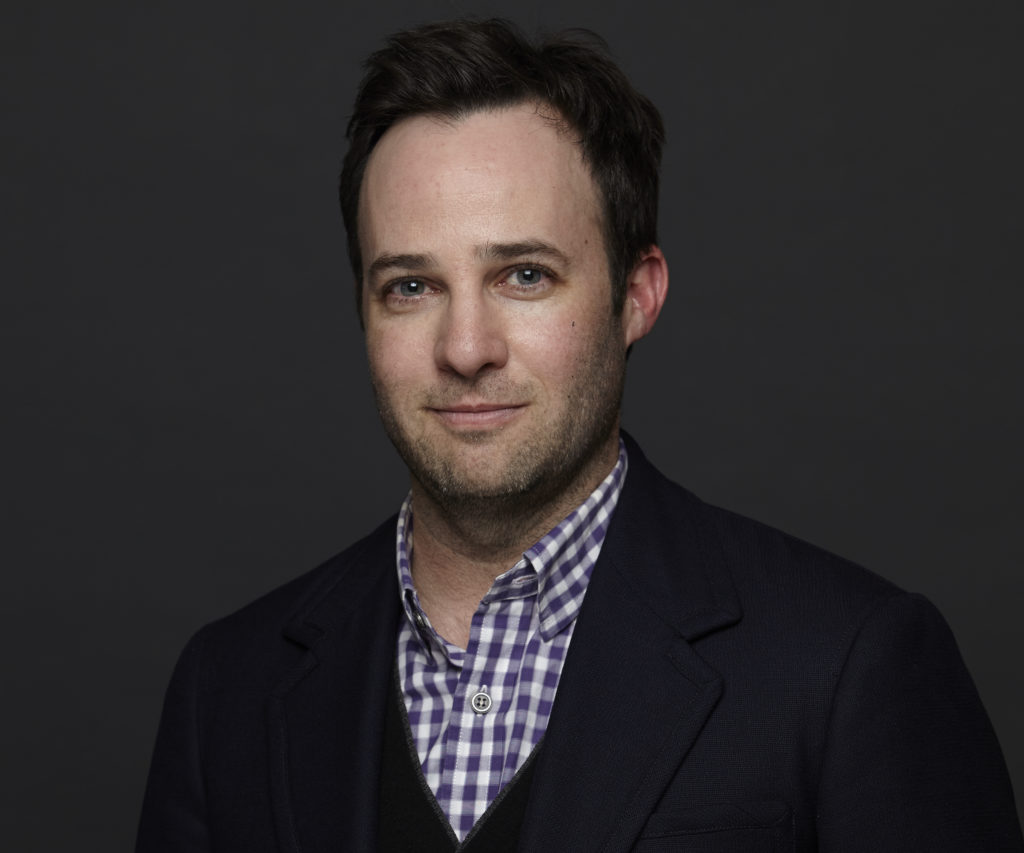
A project years in the making, REBEL IN THE RYE has proven to be a passion project for Strong. Stumbling onto Ken Slawenski’s biography “J.D. Salinger: Alive”, Strong excitedly admits that he’d “been wanting to direct for awhile. . .And when I came across the book, and I started reading about Salinger, one of the things that I was so taken by was how universal his experiences were as a young writer trying to get published. It reminded me of not only myself but of so many of my friends and what we all have gone through with rejection and rewrites and all the challenges of trying to have a career as a writer. And because of that, I immediately thought, ‘Oh, I should direct this because it was very personal to me’.”
Masterful on every level, the emotional and visual tonal bandwidths are totally merged, totally married, completely symbiotic with each other. The construct of the script and structure of the film gives the sense of experiencing the film in Salinger’s voice. With narrative voice-over and visual superimpositions for scene transition, Strong creates a storybook literary feel which ties into “that sense of feeling like you’re in [Salinger’s] voice.”
But just how challenging was it for Strong to take Slawenski’s biography and translate it into something which could be cinematic, especially knowing that he would be directing the film as well? The answer. “Extremely difficult.” According to Strong, “In doing it through story, you don’t want the goal to be to tell people the true story. You want to create a story yourself and have it feel like a film that is in a filmic form and not in just a relaying of facts. So finding this line to that, finding what your ‘film’ is ultimately about, is always very challenging and in this case it was particularly difficult.”
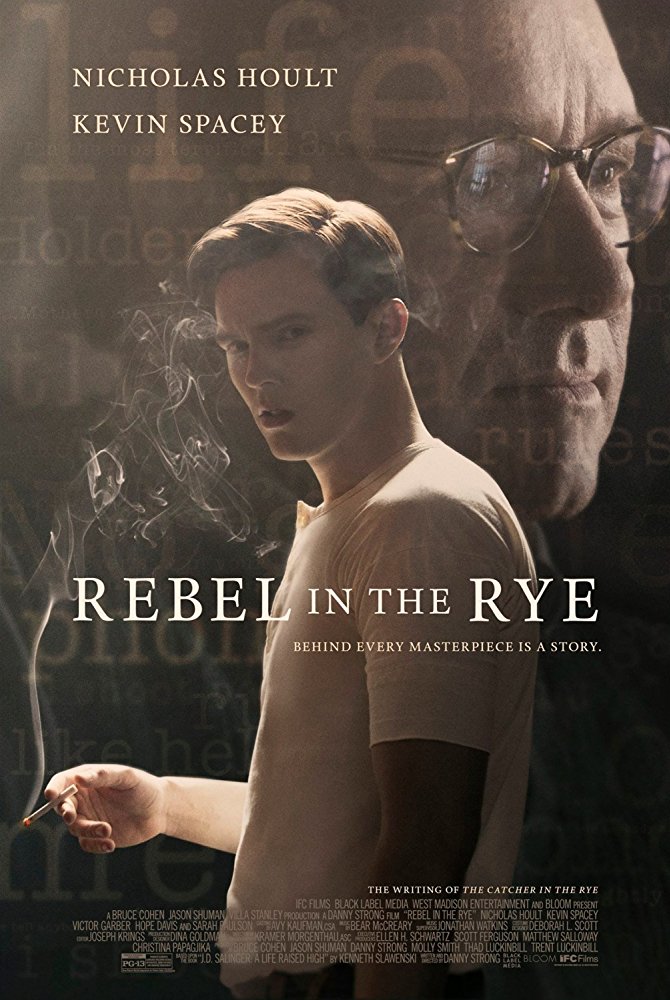
One aspect, or potential difficulty, to making any film on J.D. Salinger is the lack of video and audio recordings and limited research material available due to Salinger’s decades of self-imposed reclusiveness, a consideration for Strong who found it be both a hindrance and a help. “It’s a hindrance because the more information you have the better, but it’s better in that it gives you leeway to create something that doesn’t have all these expectations around it. When we did ‘Game Change’, Julianne Moore was under a tremendous amount of pressure for the audience to think she sounded and looked like Sarah Palin. And she pulled it off and won every award you could possibly win and she was amazing but it’s incredibly challenging and difficult. In this case, we don’t know what J.D. Salinger sounded like and so we have more leeway to create a character based on our perception of him. And I certainly am not saying this film is a documentary. I’m not saying it’s a thousand percent what everyone said is completely true. It’s very much a film. The events of the story all happened, but the scenes are fictionalized and we had that leeway because we don’t have the information.”
Despite knowing that he would be directing, Strong didn’t plan out or structure any of his visuals or even storyboard while in the initial script stages. “I definitely was writing it, writing visuals into the script in a more detailed way than I would do for a script that I wasn’t going to direct. I knew that it wasn’t just a blueprint, and I knew it wasn’t just a story, that I was writing it as a blueprint for myself. So there was certainly a number of visuals written into it in that respect. But I didn’t really dive into the visual look of the film as a director until after I had written several drafts of it and was starting to think of it as of how I’m gonna really put it together.”

Putting REBEL IN THE RYE together meant hiring an experienced crew and one of the most instrumental on Strong’s team was cinematographer Kramer Morgenthau. “I was so thrilled when I heard he wanted to do it. . . And he’s a very expensive DP because he’s so talented and successful and it was a very low budget film so I hadn’t even pursued him. But he came on board about six weeks before we started shooting, maybe four weeks.”
With Morgenthau onboard, Strong started to get down to brass tacks in designing the film’s visual look, the framing, the lighting. There’s a timelessness to the overall film that comes courtesy of the lighting and framing. Heightening the production design of Dina Goldman and costuming from Deborah Lynn Scott, framing also helps to create an intimacy that immerses us into these early days of J.D. Salinger.
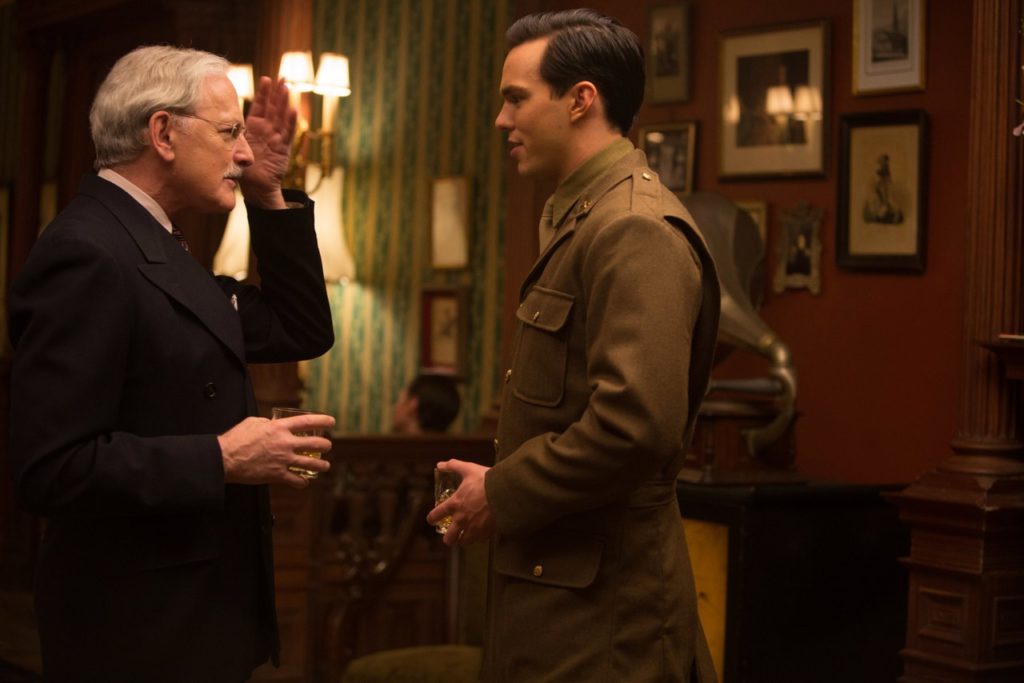
“I camera-blocked the whole film before I met with Kramer. I shot listed the whole film. Then when we got together, I had my shot list but I started from scratch with Kramer. And then Kramer and I did a design pass. Occasionally I would pull stuff that I already had come up with but most of it was stuff we came up with together. As far as the lighting and the framing and the overall visual style, we wanted it to have a period look and feel, but we didn’t want it to ooze period. We wanted to feel as if we were living in the period. And then simultaneously, I had this idea in my head that the film would look literary, that it would in some way evoke literature or a literary world. So, the lighting and the color palette were designed to sort of evoke that kind of idea.”
Adding to the sense of timelessness is the aforementioned color palette, particularly when moving in and out of significant and notable places like the offices of The New Yorker or in the office of Salinger’s agent Dorothy Olding, or even various places in which Salinger was writing. Deeper, richer tones with darker woods, darker blues, hints of gold all speak to the literary world from a visual standpoint. But then color opens up when in the Salinger family home as we see the opulence of a world revered by Salinger’s father, but thanks to the production design and Morgenthau’s lensing, we feel the almost choking claustrophobia experienced by J.D. Salinger in that world as furnishings are heavy with ornate woodworking, heavier tapestries, brocade seating.
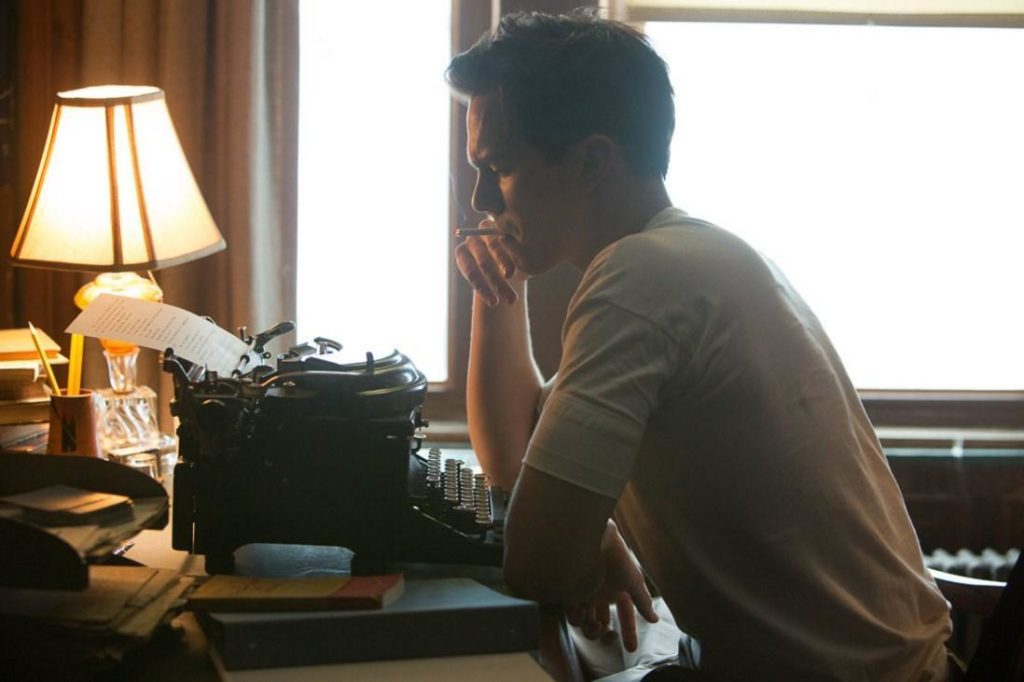
For Strong it was about creating “an old world feel” which was indicative of the fact that “[Salinger’s] father was living in a different era than what J.D. was living in and that he didn’t fit into that world of his father’s, this antiquated world.” Expounding on the visual aspect and emotional metaphor, Strong paid great attention to sound design, notably in the Salinger home as well as other locations where Strong wanted a feeling of “unsettling tones that weren’t overwhelming or that you’d be self-conscious of, but that would give a sense of being an unsettling place for Salinger to be,” all of which plays into the ultimate recluse Salinger would become.
With very meticulous sound design, Strong worked with closely with Robert Hein, whom Strong describes as “a real artist.” Diving in together for a complete aural collaboration, “We spotted the whole film and I gave him all these ideas and he would pitch me these terrific ideas. Then we worked together and did a trial run through, just me and him, and then I made adjustments. And then we finally went to the sound stage and we really designed the film really meticulously. Almost every scene has something where we’re very subtly and subconsciously trying to evoke a better understanding of the character arc, the relationships. We’re just trying to create a visceral emotion.” Their hard work paid off as nothing gets lost in a soundscape shuffle. From voiceover to dialogue to sound effects to Bear McCreary’s score, there is an appropriate balance with enhancing one sonic element over another in order to support the emotional beats.

McCreary, probably best known for his scoring of “The Walking Dead”, is also the composer for “Black Sails”, something that struck a chord with Strong. Unfamiliar with McCreary’s work, it was McCreary who reached out to Strong about REBEL IN THE RYE. “He was very interested. He sent me these demos that, without even seeing the movie, were quite beautiful and just seemed to work. Then I went through all of his music that he’s written. I listened to samples of pretty much everything he’s scored and ‘Black Sails’ in particular I loved because it had this melodic energy to it that I found just really viscerally engaging. And it was one of the things that helped me think, this guy’s really versatile and really talented.” With a very lyrical and literally ebb and flow to McCreary’s score, there are nuanced moments where one almost feels punctuation, especially with the voiceover narrative, and all of which ties together with Joe Krings’ editing.
For Strong, the most difficult part of the process of making REBEL IN THE RYE was the editing. With Salinger’s voice permeating the script and the visuals, the challenge became finding and maintaining a rhythmic cadence and balance in editing that mirrors the events of Salinger’s life. “It’s hard to tell if the film’s moving too slow, if you’re moving too fast. It was actually very, very delicate finding the balance. Some movies aren’t so delicate but this one I just found incredibly delicate. It was really challenging and really a trial and error process.

Going beyond the technical aspects of REBEL IN THE RYE is the casting and Danny Strong couldn’t have done better than this cast: Nicholas Hoult as J.D. Salinger, Kevin Spacey as Whit Burnett, Sarah Paulson as Dorothy Olding, Zoey Deutch as Oona O’Neill, Lucy Boynton as Clair Salinger, Hope Davis as Miriam Salinger, and Victor Garber as Sol Salinger. As excellent as all of the performances are, the real standout is Spacey and particularly with the relationship between Whit Burnett as Salinger’s mentor and teacher, and Nicholas Hoult’s J.D. Salinger. The relationship between Burnett and Salinger is incredible and one of the few times we’ve seen it discussed on screen or even in biographies or articles to this level of detail. Theirs is a love story of shared academia and literature, and writing; a tough-love love story. It is the cornerstone of REBEL IN THE RYE. And it was this relationship between Burnett and Salinger that inspired Danny Strong to make this film.
“When I was reading Slawenski’s biography and I got to Whit Burnett and I got to their relationship I started thinking, ‘Oh, that’s a movie relationship.’ And then it just kept getting better and better and I thought, ‘Wow, what a wonderful way to bring this film to life, this love story between student and mentor.” And it doesn’t go well. It doesn’t go the way that these relationships normally go in a movie and that was something that I was really drawn to; to not deliver upon your typical expectations of how that kind of relationship’s gonna go. So, it was very much the inspiration for doing it as a movie came from reading about their relationship. And that’s one of the things that Ken Slawenski nailed in his book that the other books don’t focus on as much, is the Whit Burnett relationship.”

Strong’s excitement and passion for focusing on Burnett and his importance in Salinger’s life is understandable. “Whit, I think, very much deserves a credit to be a major character in the film. I mean, you look at the people that he discovered. Bukowski, Caldwell, Cheever, Tennessee Williams, Joseph Heller, Richard Wright, William Saroyan. And he really did tell Salinger, ‘Holden Caulfield should be a novel’ and he kept pushing him, even more than it is in the movie. He kept writing him letters, ‘You have to make Holden Caulfield a novel. I want this novel. When’s the novel gonna be done?’.”
There’s no question that Kevin Spacey was the perfect person to play the part of Whit Burnett. A teacher himself, as Strong relates, “That’s literally the first conversation Kevin and I had about after he read the script. He said, ‘ I’m a teacher and I teach acting and this story is extremely personal to me because of that.’ It was the first thing he said to me.”
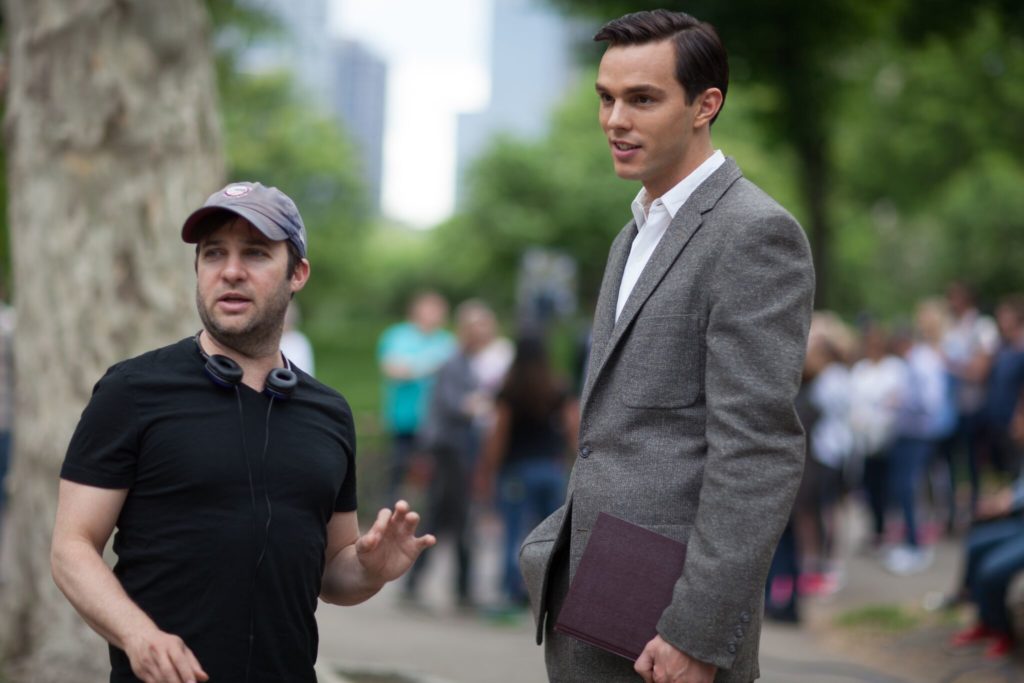
Of course, with the mentor-student relationship being the catalyst for Strong to embark on this project, one must ask just who is Danny Strong’s Whit Burnett?
“I don’t really have a Whit Burnett. I don’t have a mentor figure. I just didn’t. . .The first producer that I worked with that I sold a project with was a guy named Len Amato. And Len then got hired by HBO Films so he went from my producer to my executive on ‘Recount’. And over the years, Len has been someone that has been a great source of advice and help to me. So, I would say Len is probably the closest thing I have to Whit Burnett but that was many, many years later of me writing.”
Having made the leap from television directing to feature directorial, there are always lessons learned and Danny Strong is no different than other directors. “I think that the stuff I learned really came in post. I mean, I learned so much just about making a movie and about schedules and what I need next time and what I didn’t have so that was an invaluable. I felt like I got a massive degree by making this movie. But I think that from being in post and seeing what I didn’t have, not just what I wasn’t able to shoot but what I didn’t have in the story, I think that my characters are gonna be richer and I’ll be able to have more depth moving forward.”
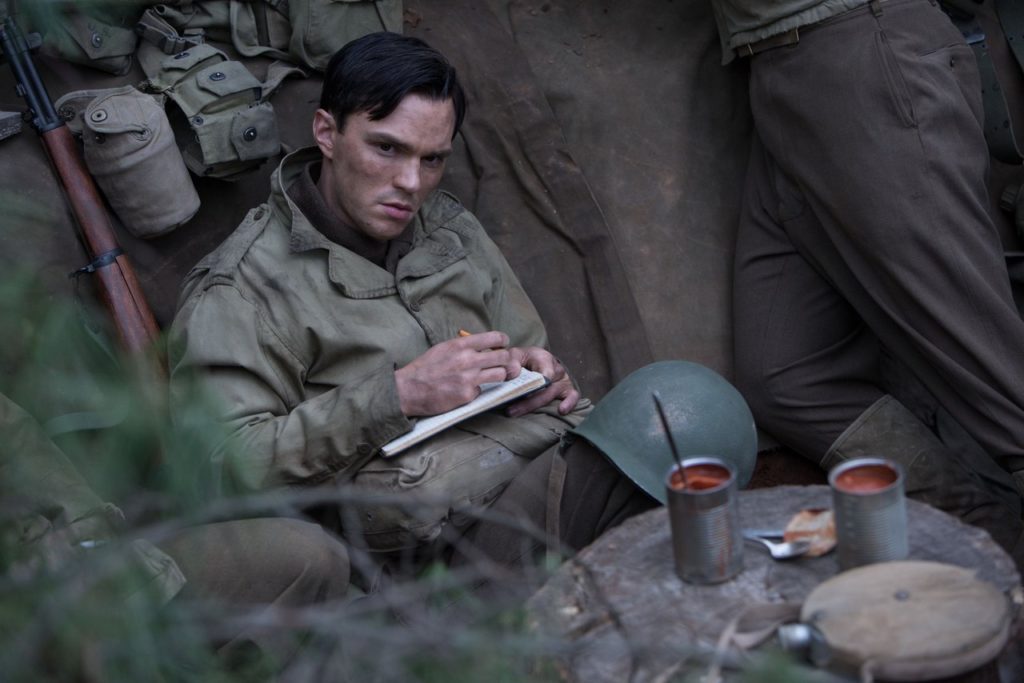
Effective and affecting, Danny Strong’s REBEL IN THE RYE gives context and understanding to J.D. Salinger’s journey not only in creating Holden Caulfield, but in shaping himself; a journey that speaks to so many of us, including Danny Strong.
By debbie elias
Interview 8/30/2017











